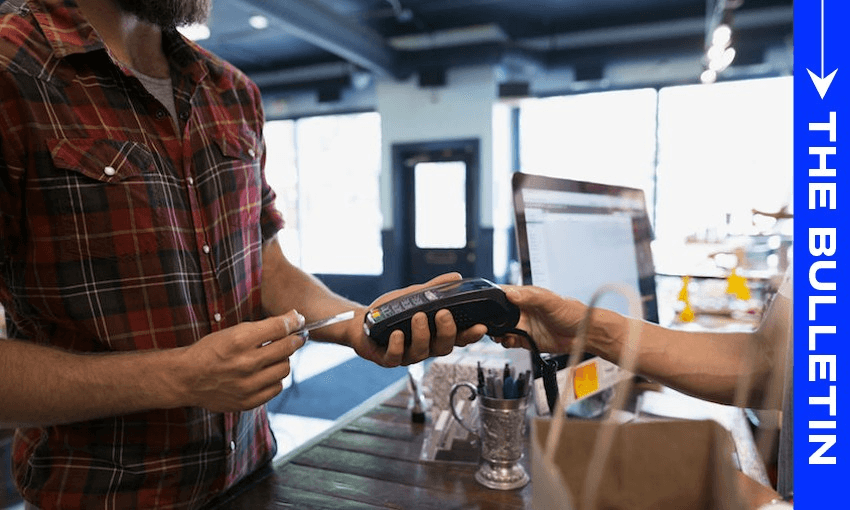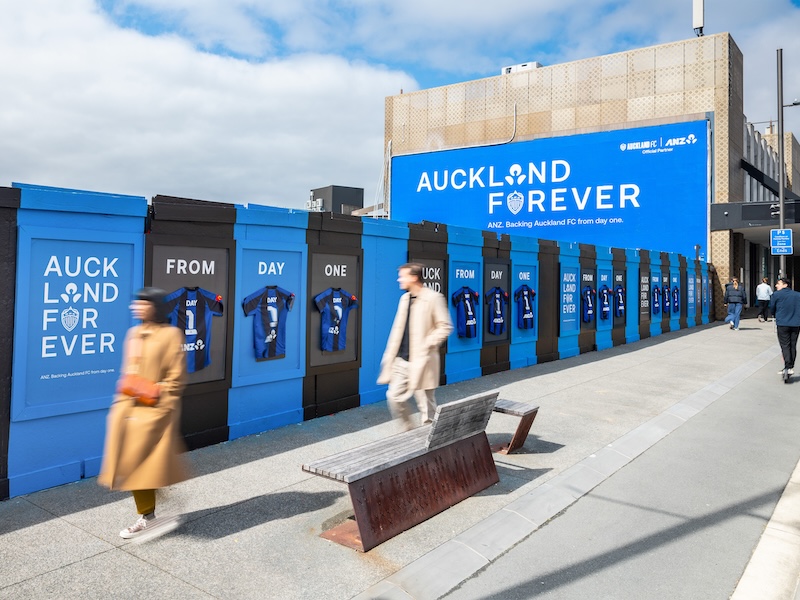Are we being ripped off? In today’s extract from The Bulletin by Stewart Sowman-Lund, the ongoing efforts to bring down spending fees.
To receive The Bulletin in full each weekday, sign up here.
The battle over surcharges
On Tuesday, BusinessDesk (paywalled) reported that the Commerce Commission was starting consultation on proposals it hoped would see credit and PayWave surcharges brought down to a maximum of 0.7%. It’s not unusual to see stores charging an extra 2.5% or even 4% on any PayWave purchase, so this would be a sizeable reduction. The Herald’s Chris Keall looked at this last week, noting that despite previous moves to cap fees, charges remained high in some places. The Commerce Commission is considering tighter regulation, but that would still be some months off. The commission’s chair John Small says fees are “too high” when compared with other countries and by reducing the burden on merchants it could also “allow businesses to reduce retail prices as well as surcharges, for the benefit of their customers”.
All of this may make you assume customers are being intentionally ripped off, but Retail NZ’s chief executive Carolyn Young told Ryan Bridge on Newstalk ZB that it was more likely a symptom of a complicated system.
Why it’s so complex
Tom Taylor explained how the fees are charged in a report for RNZ’s Checkpoint back in 2023. In short, banks charge retailers per transaction for the use of PayWave, credit and overseas cards. Each fee is different – international credit cards carry around a 2.5% fee, while PayWave is normally about 0.7% – but most stores only have one terminal and have to average out the cost of all surcharges to cover the different ways people choose to pay. Even then, as the Commerce Commission said at the time, a surcharge of 4% would well exceed the weighted average from the various fees charged by banks. Some outlets, like supermarkets, opt not to charge customers anything for using different payment methods. As Stuff’s Brianna McIlraith explained, that’s because larger stores are able to negotiate fees with the banks, a luxury smaller outlets don’t have, or may find that increased foot traffic simply outweighs the burden.
It’s not just stores that are forced to cover added costs, either. For example, I reported on the issue of carpark surcharges for The Spinoff back in February. These often incur a flat rate, meaning you could be paying as much as an extra 50% on top of the cost of a car park if you’re only stopping for a short time. Legislation introduced by the Labour government to cap fees imposed on businesses came into effect in late 2022, but Consumer NZ has expressed concern that not all savings are being passed onto customers.
Why this matters
Underpinning all of the above is the fact that PayWave and other forms of electronic payment undoubtedly serve an important role. The fees may be high, but nobody is suggesting the solution would be doing away with contactless purchases altogether. For starters, there is a convenience that comes from tap and go that can encourage more spending. How many times have you realised you’re in a shop with only your phone and have relied on Apple Pay, for example. There are other reasons too. It’s no coincidence that PayWave exploded during the Covid-19 pandemic. This Newsroom report from the early stages of the pandemic, when people were acutely aware of how much contact they had while out and about, showed that PayWave served an important role in making people feel safer when at the checkout. It’s a global trend, but the difference is that New Zealanders are paying a lot more for the privilege than many other countries, according to the Commerce Commission. In announcing its plan to try and curb fees, the commission said it could save consumers around $250m a year.
Is cash still king?
The flipside to all of this is: are we becoming too reliant on contactless technology? The cost of using your card at some stores and the recent global IT outage have compounded questions around whether we started to move away from cash too quickly. Some, like my dad, who still pays for basically everything with cold, hard money have been arguing this for years. They’re not alone. The Crowdstrike issue was a good reminder that we can’t go cashless just yet, financial writer Frances Cook told RNZ. “What happens if next time it’s a bit smarter and it is an attack, and it is deliberate and it lasts longer?” said Cook. Raphael Franks reported for the Herald last week that the Reserve Bank and the Citizens Advice Bureau had also urged people to have some physical cash, at least for emergencies. That’s all well and good, but contactless spending is here to stay. Surely the least we can expect is transparency around what we’re being charged for using it, and why.





















Discussion about this post